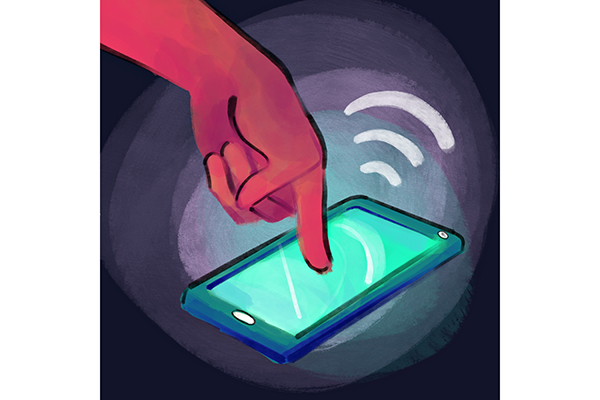Fifth generation network, known commonly as 5G and the newest generation of wireless technology, will be launching in phases beginning this year and will require updates to cell phones and cell towers.
5G will allow wireless devices to send more information at faster speeds and allow for technologies such as self-driving cars to become a reality, said Lili Qiu, computer science professor and a member of UT’s wireless networking and communications group.
Wireless devices currently send information through fourth generation networks. However, 4G’s data rate, or speed at which information can be transferred, is no longer fast enough to handle the amount of information being sent through the network, Qiu said.
“To achieve transmission at higher data rates, 5G network will use radio wave signals that operate at a higher frequency,” Qiu said.
The particular waves that 5G will use are called millimeter waves, which refer to a type of high frequency signal, said Rebal Salem Al Jurdi, an electrical and computer engineering PhD candidate.
These waves have never been used for wireless communication before and will allow for the transfer of unprecedented amounts of data, Jurdi said.
“Millimeter waves will send data like videos and images only to an intended audience without interfering with other audiences,” Jurdi said. “This type of data transfer is called ‘beamforming,’ and will solve a huge issue we have now where signals sent from different transmitters interfere with each other and are targeted to everyone.”
However, it is often hard for millimeter waves to pass through buildings and travel long distances, Jurdi said. To address this issue, 5G will employ small cells such as millimeter wave receivers that sit at the windows of the buildings and are aligned with larger cell tower antennas.
“The receiver would receive the signal from the cell tower and forward the message to you,” Jurdi said.
The small cells can also support more devices at a time, Qiu said.
“If you have a single cell tower to cover a city, then only that one tower can speak to devices,” Qiu said. “If you have multiple small cell towers in a city and each one covers a smaller range, then they can simultaneously support
more devices.”
Small cells also reduce the phone’s energy requirement since the device needs less energy to receive and transmit signals, Qiu said.
In addition to improving phone function, 5G networks will benefit devices that rely on data transfer, such as smart driving, Qiu said.
“Smart cars need good connectivity to communicate data about their surroundings and have to receive information from multiple sources,” Qiu said. “Current networks are too slow to transmit this data sufficiently.”
The hardware will also require people to buy new phones that support 5G, Qiu said.
Speech and language pathology sophomore Nick Arreguy said that phone replacements do not pose a huge issue for him.
“It goes with the territory of dealing with technology advancing,” Arreguy said. “But it does play on people’s need to have the best devices.”
In cities such as Austin, 5G will first deploy downtown and then expand to other areas, Qiu said. The network components will deploy in stages starting this year and completely finish in 2020.




















